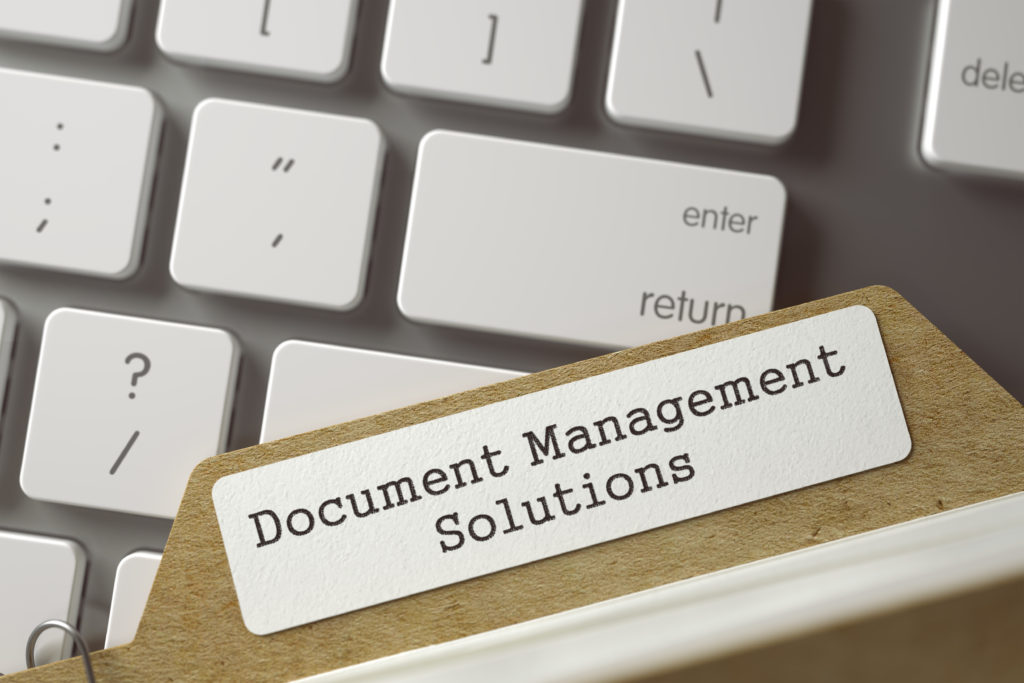Being the Records Manager is an important job: you’re safeguarding your organization’s most important documents and data.
If your organization is like most, you have various hard copy records (paper, microfilm, microfiche, etc.) spread throughout your office. As the Records Manager, you have to oversee a system for record storage, access, retrieval, and disposal.
In this article, we’ll describe the five biggest pain points of physical document management and provide you with some solutions to alleviate these challenges.
1. Record Deterioration
On the surface, handling your documents appears like an easy job: you just find a space in your office and simply put your documents away, right? The truth is there’s a lot more that goes into properly storing your records.
When you have a large backfile of physical records residing in an office, you’re taking a big risk. Hard copies records are normally stored in boxes, cabinets, or on shelves/racks. Most types are fragile and susceptible to deterioration. As part of your job, you have to create a process to store and organize your materials in a way in which it’ll be easy to retrieve but still safe from potentially hazardous elements.
For example, microfilm is wonderful for records preservation but it’s far from being the easiest material to handle. Microfilm requires proper storage in a stable, cool, and dry environment with limited light exposure. If it’s not stored in the right conditions, it can deteriorate and develop vinegar syndrome, redox, and even fall apart.
When organizations aren’t able to save their deteriorating documents in time, they have to face the reality of losing their data forever. This loss of information can be costly in terms of money, time, and liability.
2. Storage Space and Physical Handling
Even though securing your records is necessary to ensure your record’s longevity, it’s a huge pain.
For one, if you have a large number of physical records, they’ll take up a lot of space. You need to find enough space in your office to store these records; if you don’t have enough space, you’ll have to find an off-site storage facility with the proper protocols to keep your data secure. Storing your documents at an off-site facility can be costly in the long run and may also be inconvenient at times when you need a record right away, even if the facility has record request methods in place.

When storing and locating your hard copy records, there can be plenty of physical handling involved, from sorting through the “buckets” of documents (boxes, shelves, bins) and individual files (folders, binders, loose leaf), to moving them to other areas in your office or to off-site storage facilities. It requires a considerable amount of energy and you’ll need your workers to be capable of handling these tasks. As simple as it seems, not all of your employees will be able, or willing, to haul around boxes of files and help lift cabinets onto moving dollies.
Another downside of physically storing your records is that you’ll be dependent on hardware units to be able to read, scan, and share your documents. Why can this be a problem? Hardware takes up space, is probably outdated, and is prone to breaking and requiring maintenance and repairs. All this adds up to additional costs for a method of retrieval that isn’t as efficient as other options.
3. Lost Documents
As mentioned above, physical records come with a lot of handling. People are prone to errors, and since it’s people that are doing the handling, this can cause issues when dealing with records. When numerous individuals have access to your records, there’s a chance they’ll misplace or misfile your documents. The worst-case scenario is if someone accidentally disposes of (shreds, throws away, just plain loses) your important documents. Information is the backbone for many organizations, so this is an absolute nightmare.
According to PricewaterhouseCoopers, it costs companies an average of $120 to find a misfiled paper document. Lost documents are even more expensive to recreate with an average of $220.
If one of these scenarios happens to you, what will you do next? Do you have backup copies of your files? Playing out a worst-case example is a good way to decide if you’re prepared for a lost document(s) and what you and your people will do when it happens.
4. Finding Records / Record Retrieval
Because you’re the Records Manager, you probably have numerous competing tasks. However, when a record request comes to you (from a customer/colleague/boss/etc.), you have to stop what you’re doing to locate the requested record, scan or make a photocopy of it, and then supply it to the person that requested it.
Does this scenario sound familiar to you and your team? Well, you’re not alone. One study from Gartner says that “professionals spend 50% of their time searching for information, and on average, take 18 minutes to locate each document.” Another study from IDC shows that “ knowledge workers spend about 2.5 hours per day, or roughly 30% of the workday, searching for information.” This is an alarming amount of time people are spending to locate the documents they need to complete their tasks.
Searching for the right records is labor-intensive and takes a lot of time. The loss of time and productivity is costly to your organization and the reality is that even though the method described above seems like the typical way to find records and it’s how most people do it, there are more efficient document management alternatives.
5. Records Located in Multiple Locations
As much as you’d like to store your records in one central location, it’s nearly impossible, especially if you have a large volume of information. Your records could be spread out across many locations, such as in different areas in your office or at an off-site facility, and some people may even hold onto records at their desks, not realizing or caring that they should be re-filed correctly so it can be accessible to others.
If this is the case in your organization, it’ll be difficult to keep track of your records and to know where certain files are at any given time. You can also run the risk of not having the most updated hard copies. And last but not least, your team may not know where to turn to when they need to locate a record since there is no clear and centralized system in place.

Solutions
We’ve mentioned some or all of your biggest pain points of document management. But what can you do to relieve yourself of the stress of wanting to pull out your hair at work? We’ve outlined some solutions available to you below.
First, consider digital scanning and conversion. We cannot stress enough how working with an expert scanning partner to digitize your records is one of the best ways to solve your document management pain points.
Records scanning or digitization is the process of converting your physical records into a digital format (such as PDFs, TIFs, etc), which makes them easier to store and access. Digitizing your files allows you to be one step ahead and prevents it from deteriorating in the first place. It also provides you with backup recovery which is the solution to protect your records from natural disasters, structural threats, IT vulnerabilities, etc. Digitization reduces the risks of losing your records, physical handling, and office space requirements.
Second, have a clear method of organizing your digital data so that your people can find what they need. When you digitize your records, you have several options to implement to make your data easier to find, such as through indexing and optical character recognition (OCR). These features work together to improve the records retrieval process and make your records more accessible.
Third, explore the option of a document management system (DMS) to store your digital files. This can reduce, and maybe eliminate, the issue of having your records spread across too many locations by storing your digitized records in a single electronic repository. For example, with Digital ReeL as your one-stop-shop virtual archive, all your records will be stored on a web portal. By storing ALL your records in one single system, you’ll know exactly where to look whenever you need to find any documents. You can find more information about this in our article on things you need to consider when choosing a DMS.
These steps should help you solve your biggest pain points and help you create a better document management solution. If you need more help to solve your pain points, then you can work further with your scanning partner to build a customized document management solution for your organization.
Conclusion
No matter what sector you’re in or the size of your organization, efficient document management can benefit you and make your job easier. Being a Records Manager is a demanding job, but if you take the steps to find solutions to your biggest pain points and create a clear document management strategy, you’ll be responsible for helping your organization succeed in the world of information management.
Next Steps
Reach out to us today! Click the “Get Your Quote” button below, fill out the form, and we’ll quickly reply to you to discuss your project.
Further Reading
For more information about microfilm scanning, take a look at the articles below:
“The Price Of Digitization: Upfront vs. Total Costs” breaks down all the factors that affect the cost of your digitization projects. Factors include project fee, logistics, system maintenance, etc.
“Records Scanning vs. Records Storage” presents various scenarios you may face to see if it’s worth scanning your records or whether it is a better idea to store your records away.
“What Are The Advantages Of Digitization?” lists out the benefits your organization can get if you digitize your records. Benefits include saving money, increasing efficiency, saving space, etc.

